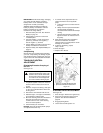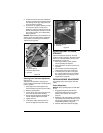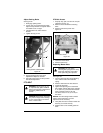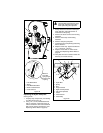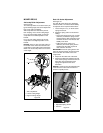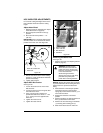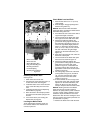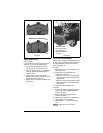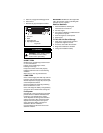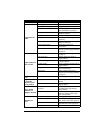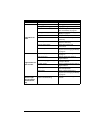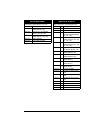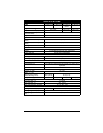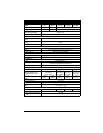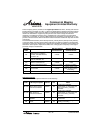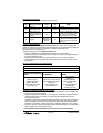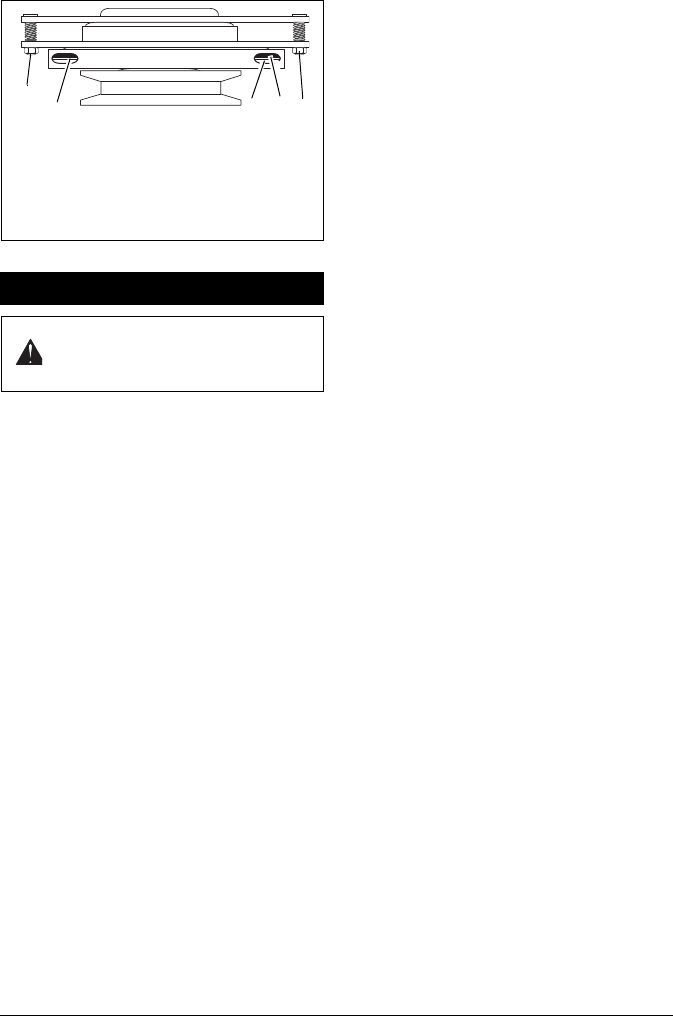
EN - 36
5. Start unit, engage and disengage PTO.
6. Shut off unit.
7. Recheck air gap and adjust if needed.
SHORT TERM
NEVER spray unit with high-pressure water
or store unit outdoors.
Inspect unit for visible signs of wear,
breakage or damage.
Keep all nuts, bolts and screws properly
tightened and know unit is in safe working
condition.
Store unit in a cool, dry protected area.
LONG TERM
Clean unit thoroughly with mild soap and low
pressure water and lubricate (see
Transaxle
Neutral adjustment
on page 28). Touch up all
scratched painted surfaces.
Remove weight from wheels by positioning
blocks under frame or axle.
Clean and charge the battery. Charge battery
every three to four weeks when storing unit.
Fuel System
Gasoline left in the fuel system for extended
periods without a stabilizer will deteriorate,
resulting in gum deposits in the system.
These deposits can damage the carburetor
and the fuel hoses, filter and tank. Prevent
deposits from forming in the fuel system
during storage by adding a quality fuel
stabilizer to the fuel. Follow the
recommended mix ratio found on the fuel
stabilizer container.
IMPORTANT: NEVER store the engine with
fuel in the fuel tank inside of a building with
potential sources of ignition.
Add Fuel Stabilizer
1. Add fuel stabilizer, following the
manufacturer’s instructions.
2. Re-start engine.
3. Run engine to distribute conditioned fuel
through the fuel system.
4. Slow the engine to an idle speed.
5. Stop engine.
To Take the Unit Out of Storage
1. Refer to the engine service manual to
prepare the engine for service.
2. Put fresh, clean fuel in the fuel tank.
3. Begin the maintenance schedule.
4. Charge and install the battery.
STORAGE
WARNING: AVOID INJURY. Read
and understand entire
Safety
section before proceeding.
Figure 33
1. Armature
2. Rotor
3. Inspection Slot
4. Gap Adjustment Nut
1
2
3
4
4



